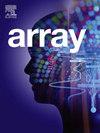Feature-driven comparison of Git and Mercurial using DBSCAN and Random Forest
IF 4.5
Q2 COMPUTER SCIENCE, THEORY & METHODS
引用次数: 0
Abstract
Git and Mercurial are prominent distributed version control systems that differ in their underlying architecture and resource consumption. This study presents a systematic comparison between their performance using a machine learning-driven approach that measures their resource consumption based on synthetically generated repositories to systematically control key variables. To eliminate anomalies, the Density-Based Spatial Clustering of Applications with Noise (DBSCAN) algorithm was applied. The influence of repository features was determined using the Random Forest (RF) in three performance dimensions: CPU time, memory usage, and repository size. The findings indicate that Git demonstrated superior efficiency in CPU and memory usage, particularly in branching operations, while Mercurial exhibited better storage optimization and consistency, making it suitable for large-scale projects with constrained storage capacity. To interpret our results, SHapley Additive exPlanations (SHAP) was used to reveal the direction and strength of features influence that correspond to the repository characteristics. These findings offer a practical guidance for selecting version control systems based on specific project requirements.
使用DBSCAN和随机森林对Git和Mercurial进行特性驱动的比较
Git和Mercurial是突出的分布式版本控制系统,它们在底层架构和资源消耗方面有所不同。本研究使用机器学习驱动的方法对它们的性能进行了系统的比较,该方法基于综合生成的存储库来系统地控制关键变量,从而测量它们的资源消耗。为了消除异常,采用了基于密度的带噪声应用空间聚类(DBSCAN)算法。使用随机森林(Random Forest, RF)在三个性能维度上确定存储库特性的影响:CPU时间、内存使用和存储库大小。研究结果表明,Git在CPU和内存使用方面表现出更高的效率,特别是在分支操作方面,而Mercurial表现出更好的存储优化和一致性,使其适合存储容量受限的大型项目。为了解释我们的结果,我们使用SHapley加性解释(SHAP)来揭示与存储库特征相对应的特征影响的方向和强度。这些发现为根据特定的项目需求选择版本控制系统提供了实用的指导。
本文章由计算机程序翻译,如有差异,请以英文原文为准。
求助全文
约1分钟内获得全文
求助全文

 求助内容:
求助内容: 应助结果提醒方式:
应助结果提醒方式:


